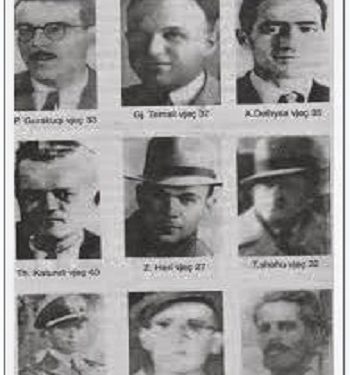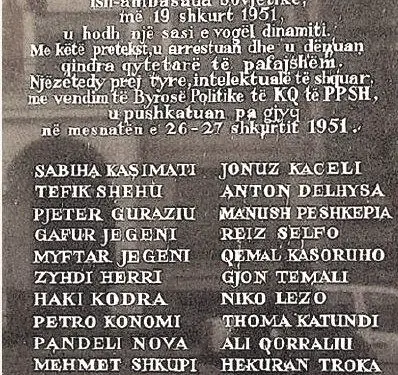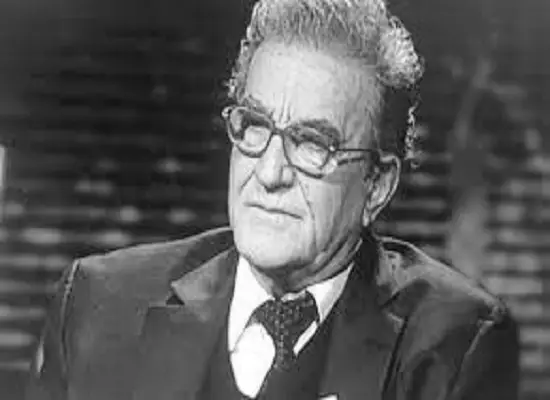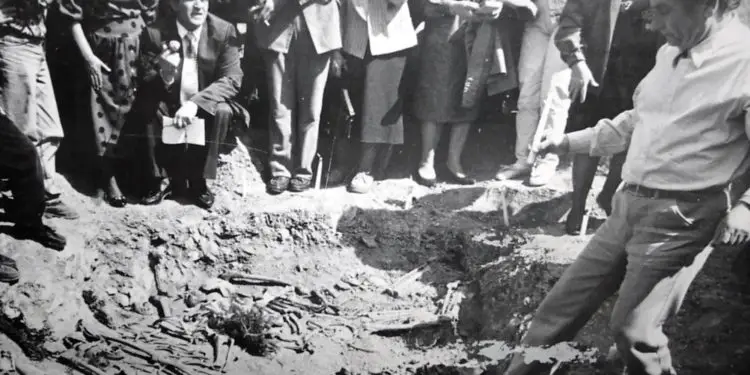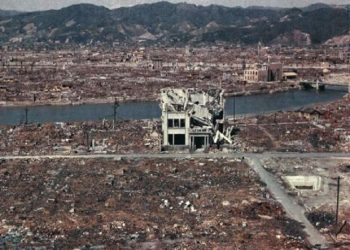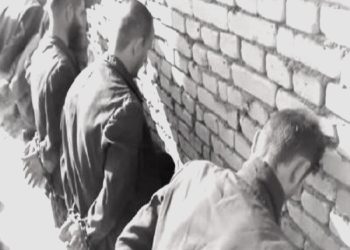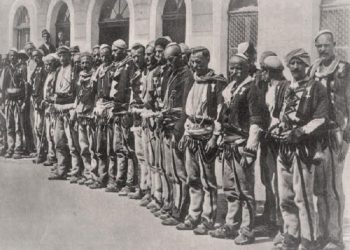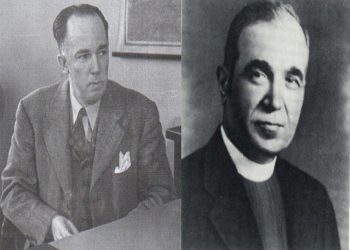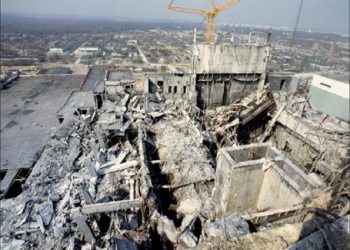From Uran Butka
Testimony of the former Prosecutor: “The draft law that allowed punishments without trial, which the Minister of Justice, Manol Konomi, refused to sign, was turned into a decree and signed by President Omer Nishani, with Secretary Sami Baholli”.
Memorie.al / The massacre of the night of February 26, 1951, is a criminal act of the communist regime. It is like this, because 22 completely innocent intellectuals were massacred and because no trial took place to prove their guilt, thus exceeding and violating both the constitution and the laws in force at that time. It is also absurd, but also extremely tendentious, because they were arrested and shot under the pretext of throwing dynamite in the yard of the Soviet Embassy, but ‘de facto’, they had nothing to do with this incident, even the State Security, did not accuse them of this incident. The stage of complete Yugoslav domination in Albania, which dragged it behind the Belgrade chariot, had ended and the period of Russian domination had begun. Enver Hoxha’s clique turned to face Moscow. “We must keep our eyes on Moscow”, he declared. (Central State Archive, P. 14. D. 11) Hoxha implemented the Stalinist instructions, orders and methods perfectly, even surpassing the “Usta”!
Albania became the most closed, poorest and bloodiest country in all the countries of the East. The dictatorship was fed and maintained by blood. The State Security was led by Russian “specialists”. Only in the Ministry of Internal Affairs, there were 40 KGB agents. But the anti-communist and anti-Soviet reaction was alive and sometimes backfired.
One of these manifestations was the throwing of reduced dynamite in the yard of the Soviet Embassy on February 19, 1951, the work of the “National Union” organization. However, it was a terrorist act that did not bring any benefit, except to increase the state’s repressive measures, to justify the new wave of arrests, shootings, imprisonments and communist terror.
The plenum of the Central Committee was immediately convened, and on February 20, the Political Bureau of the Albanian Communist Party. Mehmet Shehu, then Minister of the Interior, made the exposition of this event and emphasized that: “this is a political event, of great caliber, even bigger than an assassination that could be done against any of us”.
Mehmet Shehu requested repressive, extraordinary measures, regardless of the laws in force, since: “once again we have fired outside the laws in force. Arrest about 100 or 150 people, of which we shoot 10 or 15 of them, choosing of course the most important ones.
This measure will be followed by another measure of cleansing reactionary families from Tirana within a month. We must respond to terror with terror and we can do this conscientiously and coolly. We have prepared the lists of arrests and, if you also agree, we will act from tonight.” (From the minutes of the meeting of the Political Bureau).
All members of the Bureau raised their hands and said, unanimously: “We agree with these measures.” It is clearly seen that the decision was taken in the Political Bureau, so we are dealing with a political massacre made by a party decision. Only the selection of persons to be shot or imprisoned was made by the State Security.
From the lists prepared in time at the Ministry of Internal Affairs, the “most dangerous” were not selected and marked with a cross, which in this case were neither dangerous, nor suspicious, nor had any knowledge of the embassy event.
They were just well-known names of patriots and intellectuals, from big families, of course they didn’t like communism, but they stayed in their work, undisturbed, chosen almost from all Albanian territories, from Gjirokastra and Delvina to Kosovo, Skopje, Dibra and Montenegro, so that terror and bloodshed spread everywhere.
The creator of this next massacre was the 1st secretary of the National People’s Party and the Prime Minister Enver Hoxha, the organizer was the Minister of the Interior Mehmet Shehu.
The indictment for the 22 shot dead was signed by the Military Prosecutor, Colonel Siri Çarçani. I say “signed” because he declared after the overthrow of communism: “I, Siri Çarçani, when I signed the indictment, I did not have an investigative file sent by the Directorate of State Security to the General Military Prosecutor’s Office.
I did not know the persons named in the indictment and as a prosecutor, I did not participate in the investigations conducted by the State Security. I have neither read nor seen the records of the interrogation of these defendants nor any other material of the investigative file.
After I signed the indictment, I think I gave it to Sotiri and where it ended up, I don’t know…! To my knowledge, the Supreme Military Court has not conducted a trial against these defendants.”
The charge of the military prosecutor (although all the defendants were civilians!), is this:
- They were put to the service of foreign imperialist spies.
- They have become members of a terrorist organization.
- They have propagated to violently overthrow the people’s power and have raised slogans in favor of the outbreak of a new war by the imperialists”.
This was a general and collective charge. Whose espionage were they in the service of? Members of which terrorist organization? Stupidity reaches its peak: “They raised slogans about the outbreak of a new imperialist war”!?
There is no record of their interrogation, except for this accusation in five lines, some notes of the operatives of the State Security during the torture of the defendants, to admit their “participation” in missing acts of terrorism.
“During the questioning of the arrested by the investigators in charge of this case, most of whom were security operatives, – testifies Rasim Dedja, director of the II Directorate of the Ministry of the Interior that prepared the lists of arrests, – notes were taken and regular minutes were not kept in the position of the defendant and the investigator.
During that night, one of the arrested, Jonuz Kaceli, when he was being interrogated, jumped from the window of a room on the second floor, fell to the ground and died…! (His testimony, in 1993)
Despite all these legal and procedural violations and human rights violations, the military prosecutor, who did not have anything required by law, not even the investigative files, asked to be sentenced by firing squad based on Article 12, paragraph 2 of Law 373, dated 12.12.1946, on serious criminal offenses against the state!
An unprecedented precedent in the history of world jurisprudence. The absurdity becomes greater, when the prosecutor, as he himself claims, but as archival documents proves, was not present at the trial! There were no charges for the incident at the Soviet Embassy, for which they were arrested!
Did the trial take place?
In the files of the Supreme Court of the Republic of Albania, we find decision no. 64, dated 27.02.1951, with this content:
“The Supreme Military Court composed of:
Chairman: Colonel – Shuaip Panariti;
Member: First Captain – Vangjel Kocani;
Member: Captain Nonda Papuli;
Member and court secretary: Hidai Bejo,
After ascertaining that all 22 defendants are sworn enemies of the people and popular power, he decided on the basis of Law 373, dated 11.12.1946, to sentence them to death by firing squad, the loss of permanent civil rights and the confiscation of their property movable and immovable”.
This decision is final and immediately enforceable.
Signed by the mayor, Shuaip Panariti and member Vangjel Kocani.
Not signed by the member Nonda Papuli, not signed by the secretary of the court, Hidaji Bejo.
Why didn’t two of the members of the jury sign?
How did the court find that they were sworn enemies, when it was not assembled to do the trial? The “judicial body” did not have any separate charge for each, no written evidence, no document, no testimony or witness, no confrontation, etc. to prove their guilt.
There was no questioning of the defendants, defense and appeal. The signatures of two members of the court were also missing. The indictment was raised only on three general points and nothing more, while the “decision” of the court dated 27.02.1951 as well as another record dated 27.02.1951, on two pieces of paper, were filled out execution.
The former secretary of the court, Hydaji Bejo, testifies: “I did not sign when the decision was brought to me, I did not hear anything, whether a trial was held or not. I could not sign. Without being in judgment. Papuli did the same. We had no choice.” (1993 Evidence).
Of course, Lieutenant Colonel Shuaip Panariti, the head of the Military Court, as documented by this falsified process, has signed for a trial that was never conducted, and for a decision that was never taken in court, implementing only the decisions of the Party. Likewise, the member of the Supreme Military Court, Vangjel Kocani, who testifies:
“After a few days of this event, or after a week, I was called by the former president of the Supreme Military Court, Shuaip Panariti, and he told me that; you know that a bomb was thrown at the Soviet Embassy, the Security made arrests and some of the arrested, 22 people, were shot without trial. That’s why we have to sign a formal criminal court decision, since we can’t do a trial that the Security has shot people without trial…!
Shuaipi told me that; the decision of the Court is formal, it has no consequences and we have to do this as it is the order of the state leadership and, at that time, Enver Hoxha was the prime minister. Shuaipi told me: You Vangjel, don’t worry, while the decision is formal and we don’t actually judge anyone. He instructed me that for this fictitious criminal decision, you should keep your mouth shut; don’t tell anyone that it is a big state secret.
After that, we went with Shuaip to the offices of the Ministry of Interior…! Shuaipi presented me with the typed court decision and I signed it. When he gave me the decision to sign it, Shuaipi did not show me any investigation file, I have not seen any kind of investigation material”. (1993 Evidence)
In order to cover up this state crime, since the massacre reverberated inside and outside the country, the perpetrators quickly drew up a draft law that allowed punishments, without trial, which the Minister of Justice, Manol Konomi, refused to sign, with the argument that it did not such a thing was opportune. Then, they turned it into a decree and President Omer Nishani and Secretary Sami Baholli signed it.
This black decree, unprecedented in the entire history of old and new world legislation, justifies punishment and execution without respecting the legal procedure, eliminating all its stages, such as the trial without questioning the defendants, the defense, the appeal, the presence of the prosecutor, etc. .
On the basis of this “decree”, which bears the fictitious date of February 26, 1951, another protocol was compiled (two different protocols for the same issue), on the “decision” of the Supreme Military Court, for the shooting of 22 persons and bearing the date 27.02.1951 at the top and the date 25.22.1951 inside the decision, which states:
“The Supreme Military Court, composed of the same panel, without the participation of the prosecutor and according to the new law on the trial of terrorist acts, today takes into consideration the trial of the case, etc…!
Secretary Chairman
(No signature) (No signature)
The contradictions are numerous and absurd: the decree bears the date of February 26, the shooting took place at midnight on February 26, the records of the unsigned “decisions” of the undeveloped court bear the dates of February 27, when they were shot, and even February 25, when the decree according to which they were shot was issued the day after, on February 26!
Whatever the decree was, it could not be implemented without being published in the Official Gazette, and no longer implemented within the day or, the day before with retroactive effect! It is proven that the decree was decreed after the shooting, since the shootings and imprisonments were done without trial and this caused a stir inside and outside the country. A “fig leaf” was needed to cover the shame.
There was no state emergency or danger that they were shot without trial and at midnight, when the defendants did not present any state or social danger, other than imaginary, and they had not committed or even thought of committing any terrorist act.
The haste was related to the fact that the Soviet Embassy should be informed immediately about this settlement of accounts and “comrade Stalin” should be notified immediately.
“It would be good for us as the Political Bureau to tell him how this event happened, this great disaster, and to promise and assure him that we will continue the fight against external and internal enemies more harshly”.
All members of the Bureau approve this second proposal of Mehmet Shehu. (According to the minutes of the meeting)
Was Sabiha Kasimati a terrorist?
The first Albanian girl to graduate from the Lyceum of Korça, the first Albanian girl to complete her university studies abroad in Natural Sciences, the first Albanian female to work as a scientist at the Institute of Sciences. To the accusation of terrorism, she answered before the shooting: “I have never been of the opinion that with a revolutionary act, socialism would be achieved. I myself have not committed any assassination nor have I participated in any meeting, where a decision was made for a terrorist act…! I am an evolutionist…”!
Others, nationalists and democrats, intellectuals and soldiers, educated in the West, such as: Pjerin Guraziu and Gjon Temali from Shkodra, Zyhdi Herri, Jonuz Kaceli and Ali Qorraliu from Tirana, Manush Peshkepia, Reiz Selfo, Qemal Kasaruho and Petro Konomi, from Gjirokastra, Thoma Katundi and Pandeli Nova from Korça, Fadil Dizdari from Kavaja, Hekuran Troka from Kuçova, Niko Lezo from Delvina, Anton Delhysa from Prizren, Tefik Shehu from Gjakova, Myftar Jegeni, Gafurr Jegeni and Haki Kodra, from Dibra e Madhe, Mehmet Shkupi from Skopje, Lluka Rashkovic from Montenegro, were shot at midnight near the Beshir Bridge, handcuffed with barbed wire and covered in a common pit with soil and bushes.
Later, when the land began to be deforested, a tractor driver working in the area fainted when he saw that the tractor suddenly pulled out a corpse of a woman and was dragging it. It was the incorrupt body of the martyr, Sabiha Kasimati.
But who threw the “bomb” at the Soviet Embassy? Were the perpetrators found and what happened to them?
Those who threw the dynamite in the courtyard of the Soviet embassy were Hysen Llulla and Qazim Laçi, from the anti-communist organization “National Union”. The members of this organization were arrested and kept in secret isolation for 8 months, while “in their place”, 22 innocent victims were shot for terror and hundreds more were imprisoned and exiled.
The Supreme Military Court, on 9.10.1951, behind closed doors, sentenced to death: Qazim Laçin, Sejfulla Shima, Rustem Thaçin, Zenel Rika, Ali Vogli, while for Mark Zef Pal, Ramiz Vogli, Riza Shehu and Adem Kastrati, the sentence death, was commuted to life imprisonment.
Reshit Shima was killed in the torture chamber; Riza Pengili was shot in front of the door of the house, while Hysen Llulla, the leader of the group that threw the dynamite in the courtyard of the Soviet Embassy, was killed when he had to escape arrest by the Security agent of State, Besim Selita. Memorie.al




